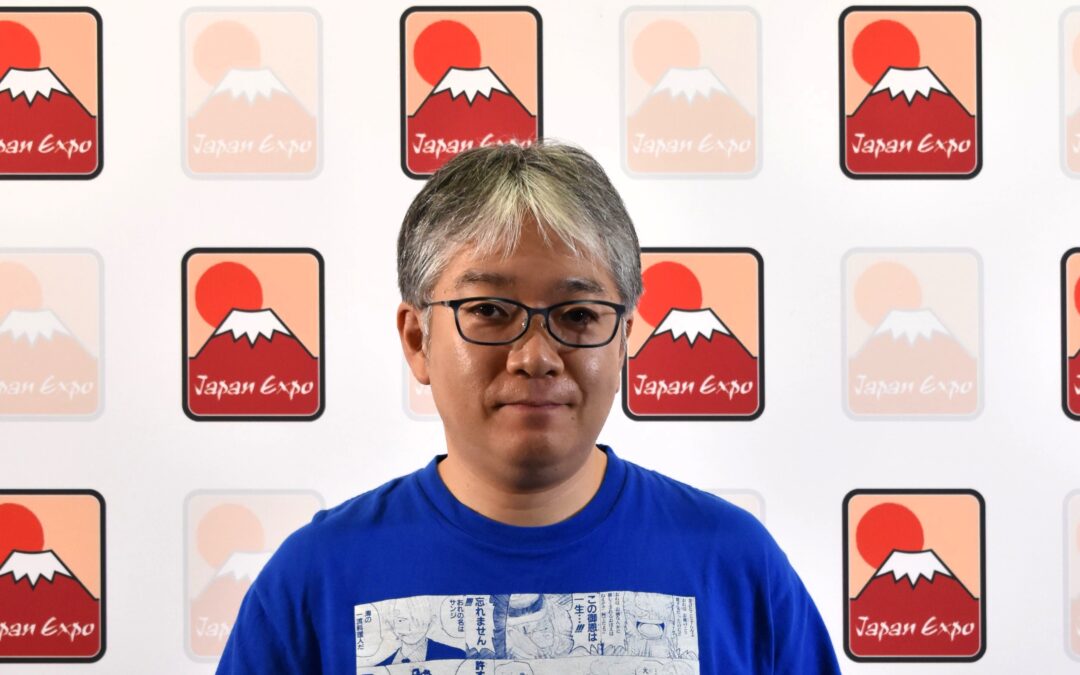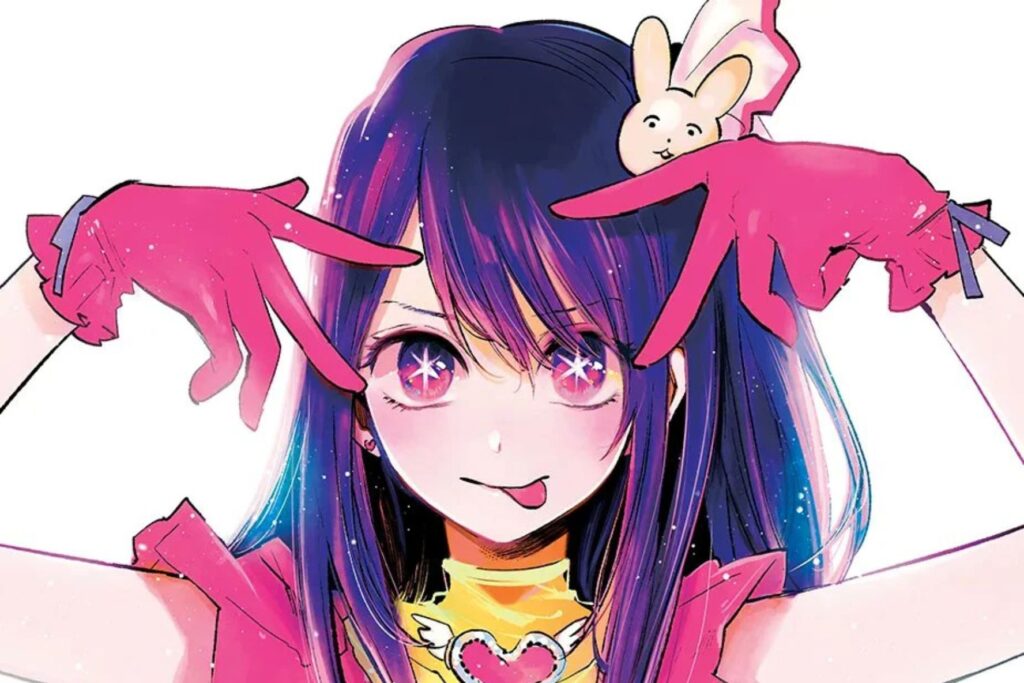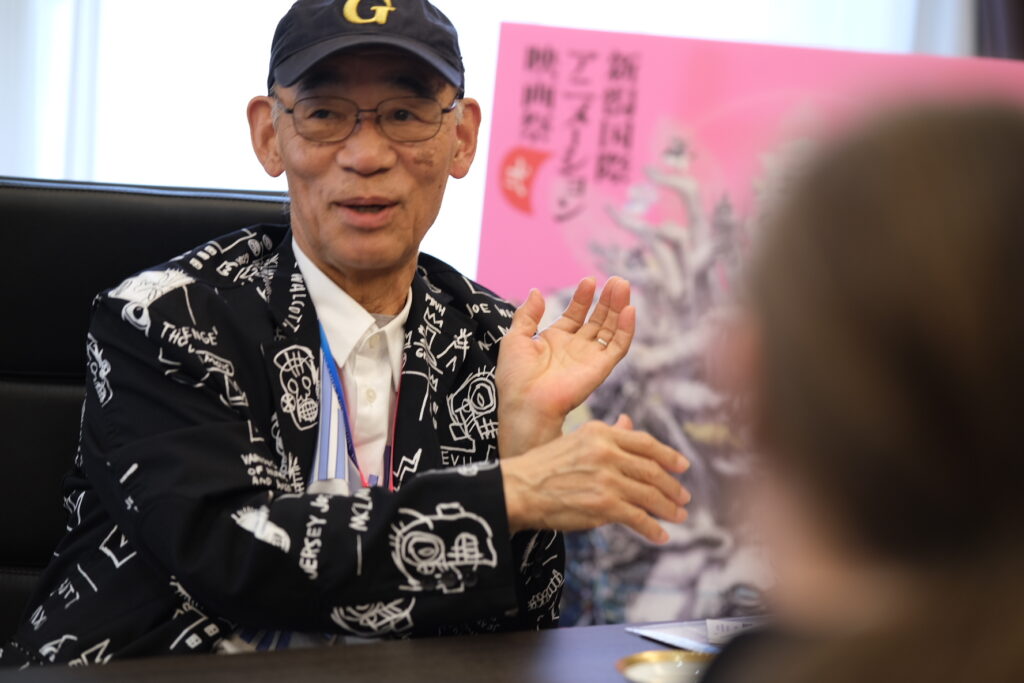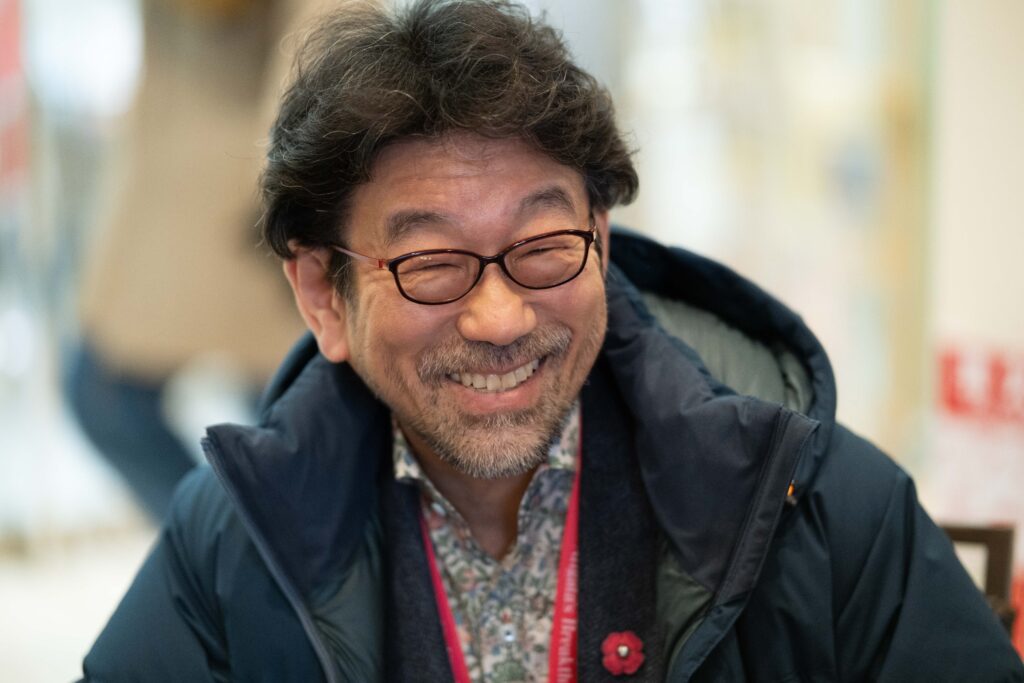In July of this year, two of the most important members of the history of the One Piece anime series were invited to Japan Expo. Eisaku Inoue, an animation director who worked on some of the most memorable episodes ever since the second episode of the series, and Keiichi Ichikawa, the current chief animation director who was hired in this position since the Whole Cake Island arc.
If you follow the anime, you should be aware of the increased quality in animation and drawing since that arc, which became even more noticeable in the following one, Wano Kuni, which blew everyone’s minds week after week over the four years it aired.
What’s especially interesting is that Keiichi Ichikawa is a disciple of Shingo Araki, one of the most influential character designers and animation directors in anime history, with a very recognizable style that shines in series like Saint Seiya, Star of the Giants, and The Rose of Versailles. A follower of the Araki school working on a series such as One Piece, which has a very distinct style, is a very peculiar profile. Of course, we couldn’t pass up the opportunity to meet with him for an interview!
Please note that this interview was done just a few weeks before the first episode of the incredible “Gear 5” section of the Wano Kuni arc, which we had only little information about. That is why we asked some questions about it in the last part of the interview, which we would not have been allowed to share before the airing of the episodes.
This article would not have been possible without the help of our patrons! If you like what you read, please support us on Ko-Fi!
What led you to become an animator? Were there any works that made you love animation as a kid?
Keiichi Ichikawa: As a kid, I always loved shows like Mazinger Z or UFO Robo Grendizer. But in Japan, animation is for kids, so it turned embarrassing to keep watching animation at 14 or 15. However, in 1984, when I was 14, three movies came out: Mamoru Oshii’s Beautiful Dreamer, Hayao Miyazaki’s Nausicaä of the Valley of the Wind, and Shôji Kawamori’s Do You Remember Love?. These three made me realize how much I loved anime and made me want to work in animation. Later, I watched Saint Seiya and loved it; and thinking about it, what I watched as a kid was also Shingo Araki’s work: Grendizer, Cutie Honey, The Rose of Versailles… which is why I decided to try and meet him.
But before that, you went to an animation school…
Keiichi Ichikawa: Yes, exactly.
Was it the Yoyogi Animation School?
Keiichi Ichikawa: Exactly, it was Yoani (laughs)
Was it helpful?
Keiichi Ichikawa: When I got in, I thought I’d meet lots of talented people and learn a lot, but it wasn’t really the case. (laughs) What surprised me the most was how few people knew about Shingo Araki!
Really? Even among professors?
Keiichi Ichikawa: Yes… You know, at the time, there wasn’t one dominant design trend in Japan. But to see all those people who came to study because they like anime but did not know Shingo Araki. I thought it was really weird. The school taught us fundamental things but not much more. Also, I didn’t really go to class. (laughs) So I’d draw by myself, making and shooting short animations with 8mm film. I had a lot of fun with that.
Did you show these anywhere?
Keiichi Ichikawa: Never. I just made those for study, so they’ve never been shown in public or anything.
Does the film still exist somewhere, though?
Keiichi Ichikawa: I wonder… It might be gone… But it might be better that way! (laughs)
Coming back to Shingo Araki, what did you think was so great about his art?
Keiichi Ichikawa: (thinks) I’d say it’s the beauty of the drawings and the coolness of the action. It’s all so powerful. Also, it’s got such a great balance. In TV animation, you can’t use that many drawings; you’re limited, but in Araki’s case, every single drawing has so much energy that it feels like it’s moving anyways. I think that’s what makes him so great.
And so you entered Araki Pro?
Keiichi Ichikawa: Exactly.
Was there an entrance exam?
Keiichi Ichikawa: Yes, there was.
Did you learn directly from Mr. Araki? How did he teach?
Keiichi Ichikawa: He didn’t really teach in the proper sense of the term. (laughs) We did it like craftsmen: I had to learn by watching him. So rather than proper training, he taught me working methods, how to approach work, what was the proper attitude, and how to give it my all. What was most important was to draw well while keeping the schedule. Though, doing both at the same time is easier said than done…
What about Michi Himeno?
Keiichi Ichikawa: She’s very gentle and interesting to be with. She has a very large culture. That’s why she can create those superb designs. She knows a lot about all kinds of things.
How was the atmosphere at the studio?
Keiichi Ichikawa: Well, the studio was in a regular Japanese house, so… It was really small! People from France or Italy often came to visit and see how we worked. They were all surprised by how small it was. But basically, we only worked there; we didn’t really talk or anything. You entered there in the morning and just worked until night.
Didn’t you go out with Mr. Araki?
Keiichi Ichikawa: I never did. We didn’t go out to eat or drink. It’s actually only after I left that I got chances to see Ms. Himeno outside of work to chat or go for a drink.
So it was pretty different with Mr. Araki.
Keiichi Ichikawa: Absolutely.
Did Osamu Dezaki come to Araki Pro?
Keiichi Ichikawa: No, he didn’t.
Did you ever meet him?
Keiichi Ichikawa: I never actually met him. I worked on some of his works, but even then, it was always someone else at meetings…
What about Akio Sugino?
Keiichi Ichikawa: I never met Mr. Sugino either. He didn’t really come to meetings either.
Pierre Giner: He hates to meet with people. He has to be alone. It’s like a disease.
Keiichi Ichikawa: Yes, he’s the type to fully focus on work.
Pierre Giner [Mr. Ichikawa’s guide]: He’s Mr. Dezaki’s perfect opposite. (laughs)
I see… I have one last question about Araki Pro: do you have any special memories from that time?
Keiichi Ichikawa: I remember, during the party after we completed Saint Seiya Heaven Chapter – Overture, I got completely drunk and told Araki something like “Thanks for making me participate! Thanks to you, my life has gone completely crazy! I became an animator because I watched your drawings! I’ve been working so hard since then!” and he replied, “Wow, you’ve got a big grudge, how scary!” (laughs)
Pierre Giner: Wasn’t there a coffee shop the Araki Pro people always went to? Near Studio Nue…
Near Studio Nue? Did you go there?
Keiichi Ichikawa: No, I didn’t (laughs)
Did you work with Mr. Umakoshi on Saint Seiya Omega?
Keiichi Ichikawa: I almost never met Mr. Umakoshi. I’ve greeted him a few times, but you know, if you’re from different studios, you don’t really have many occasions to meet with other animators because everyone works at their own place.
But you know about Mr. Umakoshi’s work, right?
Keiichi Ichikawa: It’s beautiful, isn’t it? It’s similar to Mr. Araki’s style in some ways… He’s about as talented as Araki was.
That’s because Umakoshi inherited Araki’s spirit.
Keiichi Ichikawa: You could say that. (laughs)
I’d like to ask you about two works in particular now, Re: Cutie Honey and One Piece: Baron Omatsuri and the Secret Island. That’s because both had animators from Tôei and Gainax on them, which makes them a bit special. How did they collaborate in the first place?
Keiichi Ichikawa: There are three episodes of Re: Cutie Honey. The first and third ones were made by Gainax, but the second one was made by Tôei. I worked on it as a contractor for Tôei. The director of this second episode was Mr. Naoyuki Itô. Before that, he had directed Air Master, the designs of which were by Mr. Umakoshi. In my case, I got the offer because I had worked on Air Master, and I gladly accepted to try it out: it was Cutie Honey, so Shingo Araki’s legacy.
Re: Cutie Honey is really good. Was there any rivalry between Tôei and Gainax?
Keiichi Ichikawa: Not really. We just thought we’d do our own Tôei episode in our usual style. Gainax was pretty good and focused on the animation, while on our end, while we did our best with the animation as well, we put more emphasis on the story and the overall mood.
Then, for Baron Omatsuri, the Gainax staff was simply there because it was a feature, so they needed to gather lots of people. And in my case, once again, I got the offer as any other job for Tôei. I hadn’t really worked on One Piece a lot before.
So were you invited by Mr. Hosoda?
Keiichi Ichikawa: No, the production staff just asked me as they usually did.
After Baron Omatsuri, you kinda became a One Piece specialist.
Keiichi Ichikawa : (laughs) Yes, that’s true. I don’t know how that happened.
Well, that’s what I wanted to know.
Keiichi Ichikawa: Back when I was working on Saint Seiya, I met this producer called Mr. Sakurada. He kept inviting me to the One Piece TV series, but since my style is influenced by Araki, I wasn’t sure it would fit. But since I was invited, I accepted and joined the show in 2015, after working on the TV special about Sabo. But even before that, Mr. Sakurada would put One Piece volumes on my desk when they came out. I had no relation with it back then, but he talked about it so much, it was like he was completely crazy about it. So, I thought I’d work on it once and then be done with it. But then I read the manga, and it was really fun and wonderful, so I started wanting to do it for real.
When did you join Tôei Animation?
Keiichi Ichikawa: I work for Tôei, but I’m not an employee. I’m freelance, taking work from both Araki Pro and Tôei. So, thanks to that, I don’t have to do second key animation for Tôei.
So, as you said, Araki’s style and One Piece are a weird combination. (laughs) How did you manage to pull it off?
Keiichi Ichikawa: I had to think it up by myself. When I did the Sabo TV Special, the series was still airing at the same time. So I read One Piece, and I realized that the styles of the manga and anime are a bit different. What makes the manga so appealing is its dynamism. It felt like it might work with Araki’s style, and when I tried it out, it did! So, I started thinking I might be able to work on One Piece.
More concretely, the way Oda and Araki draw faces are similar. The proportions of the face, the way eyes are placed, right in the middle of the face… They progressively got that way, and it’s a bit similar to how Araki drew faces. However, the way Eisaku Inoue draws One Piece characters is different.
The series’ animation leveled up when you became chief animation director. What happened? Did the budget go up?
Keiichi Ichikawa: I think so, especially when Wano Kuni started. But even then, it’s not easy.
How about changes in the staff? Is director Nagamine playing a big part?
Keiichi Ichikawa: He is. He’s extremely obliging, and so he’s really helping out so that everybody improves.
Were there any changes in One Piece‘s production?
Keiichi Ichikawa: There were. We try to let the new recruits do what they want to. A lot of staff from all around the world joined. It’s not all bad, but each country has its own culture, and foreign animators don’t always know how to match the Japanese style, so compensating for that is also causing some problems.
Ah yes, for example, they can’t do second key animation properly?
Keiichi Ichikawa: (laughs) I see you already know about it! That’s it. It’s a burden for animation directors. People come and ask them to correct this, and then that, and then that… It’s tough.
So why are production assistants still recruiting people like that?
Keiichi Ichikawa: Staff is lacking. Even those people are needed. They can’t really draw second key animation, but if the animation director corrects when they’re asked, they will continue again and again.
So shouldn’t foreign animators be taught second key animation?
Keiichi Ichikawa: We don’t really have a system to do that. If we think someone is good, we entrust work to him. And if they do it, everybody will be grateful. It causes us trouble, but we can’t really do anything about it: we have no time and no budget, but at the same time, the more this happens, the harder it gets for us…
So the number of animation directors increases…
Keiichi Ichikawa: Exactly.
I see. Can you explain your approach as chief animation director?
Keiichi Ichikawa: From the very beginning, when there’s an original manga, I’m the type who wants to get close to its style. As I respect Eiichirô Oda, I want the differences between the drawings of the manga and of the anime to be as minimal as possible. I don’t want to be told, “The anime is different.”.
Is it just about the faces?
Keiichi Ichikawa: It depends. But the face is the most important. The animation directors watch the drawings first, and when the faces are finished, I ask if we can’t push the emotions more, like adding more anger there, or on the contrary, make a gentler face there.
If it’s Luffy, not making his expressions too stiff; if Sanji is making a miserable face, making it even more pitiful. Those features become the core of it.
Do you do key animation sometimes?
Keiichi Ichikawa: Never. I don’t have the time.
That’s a shame.
Keiichi Ichikawa: Yes, but that’s how it is.
It seems like you often use hatching to represent shadows. It’s a manga gimmick, but was that your idea?
Keiichi Ichikawa: Absolutely. When I started doing it, the staff who had been present for a long time on the series told me the increasing line count bothered them. But I still really think that the result ends up looking even more like the original manga.
Did you come up with any other similar ideas?
Keiichi Ichikawa: That’s the main one. Then, on Wano Kuni, during the compositing, we started using line processing to create more of a brush effect. They didn’t do that on Whole Cake; rather, they tried to keep the lines of the original animation as is and draw these really neatly. This kind of exposed both the strengths and weaknesses of the animation, whereas we went in another direction and tried to get closer to the manga as I just said.
I’ve got a question about working on such a long-running series. Isn’t it tiring?
Keiichi Ichikawa: It can get tiring, yes. Well, One Piece really is the most popular weekly anime, isn’t it? I do feel some pressure working on it.
Then, where does your motivation come from?
Keiichi Ichikawa: The fans are a big part of it. Being able to work on such a well-received series really makes me glad. Checking social media after an episode can get a bit scary, but I sometimes see acquaintances saying how good it was, and wanting to meet their expectations really drives me forward.
So, is it fair to assume you want to continue One Piece for as long as you can?
Keiichi Ichikawa: Until the end, if I can last that long! As long as there are people that want to see it continue. But of course, I can’t say for sure. I don’t even know how much story there remains to adapt.
Do you know how One Piece will end?
Keiichi Ichikawa: No, no! (laughs) I don’t know a thing!
Until the end, huh? Makes me think about Megumi Ishitani. She’s really talented, isn’t she?
Keiichi Ichikawa: Ah, well, I don’t really know her that much, actually. I can’t say much. Instead of saying she is talented, I’d say she puts in a lot of effort. I know she’s had quite a hard time making sure she also brought something to the table in this series of episodes. But from the impressions I’ve got, she’s a very kind, interesting person.
One last question, then. We’re all waiting to see Gear 5 in action. Are those episodes’ production over now?
Keiichi Ichikawa: I think the studios are still working on them, but it can be hard to say for sure, it is a weekly anime after all. It’s quite a challenge! I’m not sure they’ll be done by the time I come back. I can’t show you anything, of course, but I really am looking forward to the finished result.
Gear 5 borrows a lot of inspiration from old-time animation techniques, right?
Keiichi Ichikawa: Yes, just like a cartoon!
Have you had the chance to watch or study those yourself or with the team? I’m thinking of Tex Avery, Max Fleischer, and so on
Keiichi Ichikawa: If I remember correctly, we’ve had Tom & Jerry playing in the staffroom as a reference. People were drawing left and right. It had quite the effect on me as well.
We wish to thank Mr. Keiichi Ichikawa for his time, as well as the teams from Japan Expo for their help in setting up this interview.
Interview by Arnaud Bastié and Ludovic Joyet
Translation by Florian Abbas, Loïc André and Matteo Watzky
Introduction by Arnaud Bastié
This article would not have been possible without the help of our patrons! If you like what you read, please support us on Ko-Fi!
You might also be interested in
Oshi no Ko & (Mis)Communication – Short Interview with Aka Akasaka and Mengo Yokoyari
The Oshi no Ko manga, which recently ended its publication, was created through the association of two successful authors, Aka Akasaka, mangaka of the hit love comedy Kaguya-sama: Love Is War, and Mengo Yokoyari, creator of Scum's Wish. During their visit at the...
Ideon is the Ego’s death – Yoshiyuki Tomino Interview [Niigata International Animation Film Festival 2024]
Yoshiyuki Tomino is, without any doubt, one of the most famous and important directors in anime history. Not just one of the creators of Gundam, he is an incredibly prolific creator whose work impacted both robot anime and science-fiction in general. It was during...
“Film festivals are about meetings and discoveries” – Interview with Tarô Maki, Niigata International Animation Film Festival General Producer
As the representative director of planning company Genco, Tarô Maki has been a major figure in the Japanese animation industry for decades. This is due in no part to his role as a producer on some of anime’s greatest successes, notably in the theaters, with films...





Recent Comments